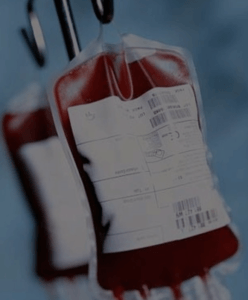Sharing an Errors Story with Clinicians
 Can your LNC practice involve educating by sharing an errors story with clinicians? I argue it not only can, it should.
Can your LNC practice involve educating by sharing an errors story with clinicians? I argue it not only can, it should.
Here is a story I use for educating clinicians.
The beginning of the errors story
Two elderly Italian men with the same name were patients in an inner city hospital. Joe #1 was moved from one nursing unit to another. The new nursing unit requested a new addressograph plate for his chart. The admitting office sent up a plate with the wrong information – that of Joe #2. Their ages were slightly different and they had different physicians. The plate contained their name, age and physician’s name.
The nursing staff did not detect the discrepancy and began using the incorrect addressograph plate.
The physician for the first man (Joe #1) ordered a type and cross match for 2 units of packed red blood cells. The second man (Joe #2) had also needed blood and had been typed and cross matched earlier.
The lab technician got an order for a type and cross match for Joe #1. After she drew the blood sample and took it to the lab, she saw there was already a completed test, which was Joe #2’s blood. The technician discarded the sample without testing it, not realizing that Joe #1 was a different person.
The nurse who retrieved the blood units asked another nurse to verify the numbers with her. They did this check at the nursing station, using a chart stamped with the wrong patient’s information. Neither of them went to the bedside and checked the numbers on Joe #1’s identification band.
The result of the blood transfusion error
Joe #1 died partway through the second blood transfusion due to a blood incompatibility. The error came to light when the patient’s daughter looked at the toe tags stamped with the addressograph plate and said, “That’s not my father’s physician’s name.”
The hospital settled on behalf of the nurses. I was an expert witness in this case.
Sharing an errors story to save lives
After the case was settled, a nurse came up to me when I was working as a staff nurse on a medical surgical unit. She had a blood bag in her hand and said, “Can you check this with me? Here, let’s just check the chart. Let’s do it here at the nurses’ station.”
Every time nurses asked me to check the blood bag at the nursing station (and it happened frequently) I was sharing this errors story by giving an abbreviated description of the incident. I would conclude by saying, “Let’s go into the patient’s room and check the armband. This is why.”
I can’t tell you how many people would stare at me with horror because something they were treating as a very casual procedure was actually fraught with so much danger.
No one working within the medical malpractice arena wants to see patients die and clinicians not learn from the experience. Your work as an LNC brings you many stories. You can prevent medical errors by sharing an errors story with clinicians.
Pat Iyer MSN RN LNCC is president of the Pat Iyer Group. She sure learned a lot by being an expert witness for 25 years. Yikes!
